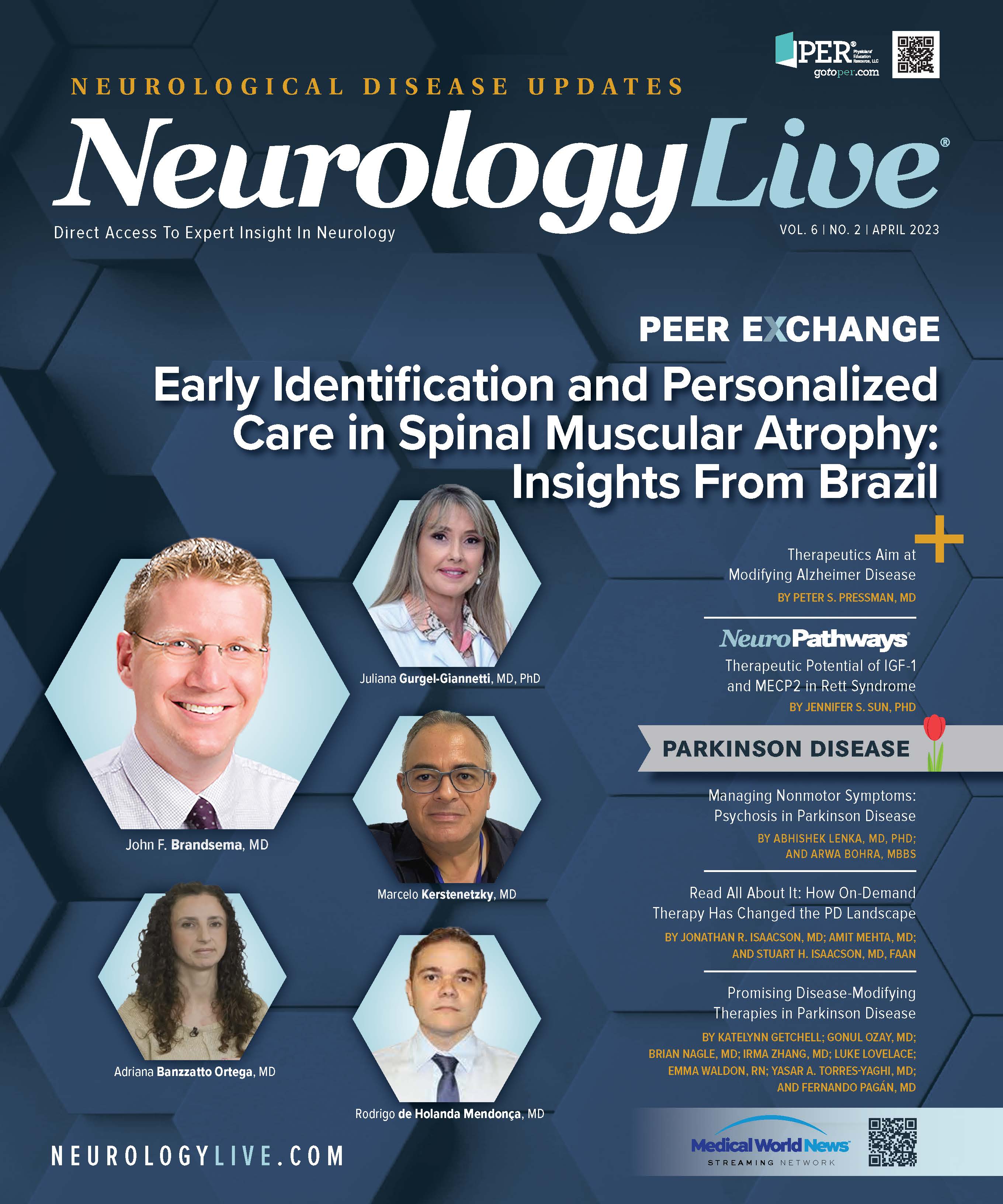Publication
Article
NeurologyLive
Cognition Stabilized in Highly Active Relapsing MS on Cladribine
Author(s):
Between pretreatment naïve patients and those previously on disease-modifying therapies, treatment with cladribine resulted in stable scores on Symbols Digit Modalities Test and other cognitive assessments.
Krzysztof Selmaj, MD

Post-hoc data from the phase 4 CLARIFY-MS study (NCT03369665) of patients with highly active relapsing multiple sclerosis (MS) showed stability on several different cognitive measures after a 2-year period treated with cladribine (Mavenclad; EMD Serono). These sustained effects were seen for both those who were pre-treatment naïve and those previously on a disease-modifying therapy (DMT).1
These data were presented at the 2023 Americas Committee for Treatment and Research in Multiple Sclerosis (ACTRIMS) Forum, held February 23-25, San Diego, California, by Krzysztof Selmaj, MD, professor of neurology at the Medical Academy of Lodz. CLARIFY-MS was a 2-year, prospective, open-label, single-arm study that assigned patients with highly active relapsing MS treated with cladribine 3.5 mg/kg cumulative dose over 2 years. Originally comprised of 482 patients, the new analysis included 399 individuals who completed Brief Cognitive Assessment for Multiple Sclerosis (BICAMS) at 12 and 24 month time points.
The BICAMS battery included the Symbol Digit Modalities Test (SDMT), the California Verbal Learning Test-II (CLVT-II; first 5 recalls), and the Brief Visuospatial Memory Test-Revised (BVMT-R; first 3 recalls), with scores on each of these 3 measures transferred to scaled scores to indicate better performance. Subgroup analyses were performed for patients either pre-treatment naïve (n = 108) or on prior DMT (n = 291). Additionally, investigators calculated the correlation between BICAMS parameters and annualized percentage brain volume change (PBVC) after 24 months of treatment as well.
After 24 months of treatment, cognitive function, including measures or processing and motor speed, verbal and visuospatial learning, and aspects of memory, remained stable while on cladribine. The median SDMT scores at baseline were 7.0 (range, 3-17) and remained in that range at the 12- (median, 7.0; range, 3-18) and 24-month (median, 7.0; range, 3-18) time points. Scaled CLVT-II and BVMT-R scores increased slightly from baseline (CLVT-II: median, 10.0; range, 2-18; BVMT-R: median, 8.0; range, 2-18) to month 12 (CLVT-II: median, 11.0; range, 2-18; BVMT-R: median, 9.0; range, 2-18). These increases were sustained through month 24.
Between pre-treatment naïve and prior DMT subgroups, there were no significant differences in any of the outcomes. Additionally, investigators found no correlation between annualized PBVC from baseline to month 24 and BICAMS parameter changes (SDMT, r = 0.11; CVLT-II, r = .17; BVMT-R, r = .07).
Previously, at the 2022 European Committee for Treatment and Research in Multiple Sclerosis (ECTRIMS) Congress, findings from CLARIFY-MS highlighted the physical and mental aspects of quality of life improved through cladribine. Using the Multiple Sclerosis Quality of Life-54 (MSQol-54), physical composite scores were changed by a mean of 4.86 points (95% CI, 3.18-6.53) and mental health composite scores were changed by 4.80 points (95% CI, 3.13-6.46), at the 24-month time point, both of which were statistically significant (P <.001). Similar to Krysztof’s analysis, changes in MSQol-54 scores were consistent across both the treatment-naïve and treatment-experienced subgroups.2
Additional data presented at ECTRIMS 2022 on cladribine’s use in a real-world setting suggested that those who switched their treatment to it from infusion therapies experienced reduced annualized relapse rates (ARRs) and tolerated the oral purine antimetabolite well. All told, the ARRs for the cohort 1 year and 2 years prior to a switch in disease-modifying therapy (DMT) were 0.58 and 0.7, respectively. Over the 2-year course of the study (May 2019 to March 2022), the post-DMT switch ARR was 0.17 for patients with at least 1 year of follow-up (n = 23).3
Click here for more coverage of ACTRIMS 2023.
REFERENCES
1. Langdon D, Brochet B, Havrdova EK, et al. Stabilization of cognitive function in patients with highly active relapsing multiple sclerosis treated with cladribine tablets during the 2-year CLARIFY-MS study. Presented at: 2023 ACTRIMS Forum; February 23-25; San Diego, CA. Abstract P090.
2. Solari A, Montalban X, Lechner-Scott J, et al. Improvements in quality of life over 2 years in patients treated with cladribine tablets for highly active relapsing multiple sclerosis: Final analysis of CLARIFY-MS. Presented at: ECTRIMS Congress; October 26-28, 2022; Amsterdam, Netherlands. P108.
3. Negroski D, Sellers S, Khiabani A, Khiabani D. Real-world experience switching from high-efficacy infusions to cladribine tablets. Presented at: ECTRIMS Congress; October 26-28, 2022; Amsterdam, Netherlands. EP1055.

Newsletter
Keep your finger on the pulse of neurology—subscribe to NeurologyLive for expert interviews, new data, and breakthrough treatment updates.





